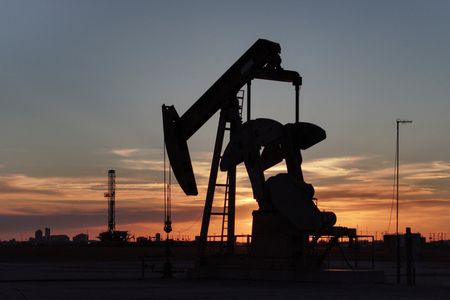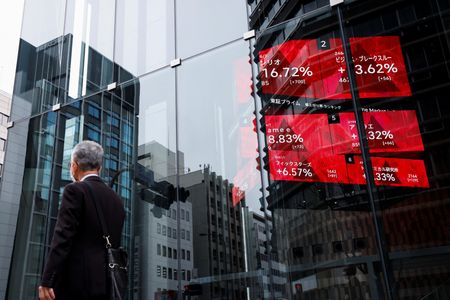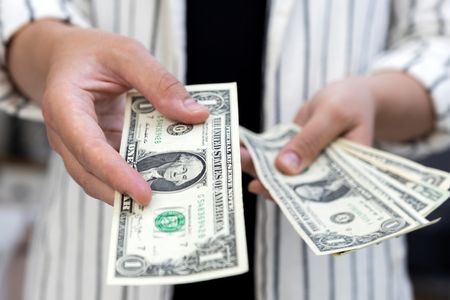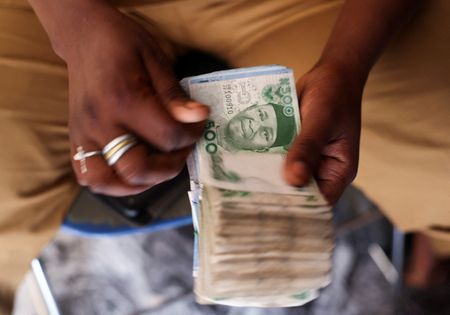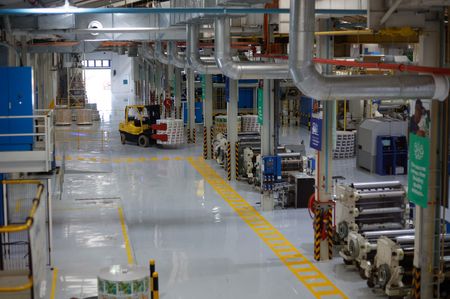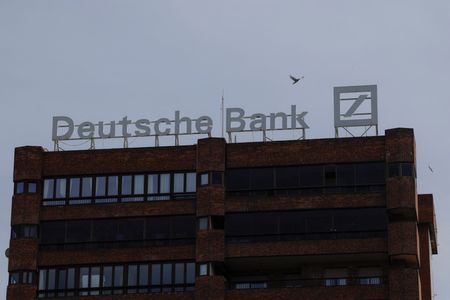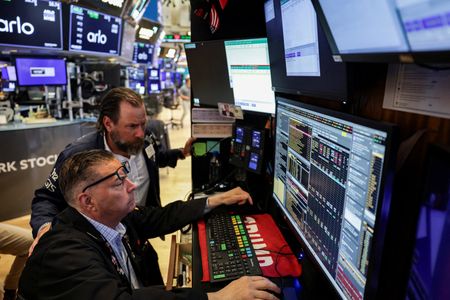By Anna Hirtenstein
LONDON (Reuters) -Oil prices edged lower on Thursday as investors weighed the potential impact of U.S. President Donald Trump’s tariffs on global economic growth.
Brent crude futures were down 53 cents, or 0.8%, at $69.66 a barrel by 1210 GMT. U.S. West Texas Intermediate crude fell 62 cents, or 0.9%, to $67.76 a barrel.
On Wednesday, Trump threatened Brazil, Latin America’s largest economy, with a punitive 50% tariff on exports to the U.S., after a public dispute with his Brazilian counterpart Luiz Inacio Lula da Silva.
He has also announced plans for tariffs on copper, semiconductors and pharmaceuticals and his administration sent tariff letters to the Philippines, Iraq and others, adding to over a dozen letters issued earlier in the week including for powerhouse U.S. suppliers South Korea and Japan.
Trump’s history of back-pedalling on tariffs has caused the market to become less reactive to such announcements, said Harry Tchilinguirian, group head of research at Onyx Capital Group.
“People are largely in wait and see mode, given the erratic nature of policymaking and the flexibility the administration is showing around tariffs,” Tchilinguirian said.
Policymakers remain worried about the inflationary pressures from Trump’s tariffs, with only “a couple” of officials at the Federal Reserve’s June 17-18 meeting saying they felt interest rates could be reduced as soon as this month, minutes of the meeting released on Wednesday showed.
Higher interest rates make borrowing more expensive and reduce demand for oil.
Supporting oil prices however was a weaker U.S. dollar in Thursday’s Asia trading session, said OANDA senior analyst Kelvin Wong. A weaker dollar lifts oil prices by making it cheaper for holders of other currencies.
U.S. crude stocks rose while gasoline and distillate inventories fell last week, the Energy Information Administration said on Wednesday. Gasoline demand rose 6% to 9.2 million barrels per day last week, the EIA said.
Global daily flights were averaging 107,600 in the first eight days of July, an all-time high, with flights in China reaching a five-month peak and port and freight activities indicating “sustained expansion” in trade activities from last year, JP Morgan said in a client note.
“Year to date, global oil demand growth is averaging 0.97 million barrels per day, in line with our forecast of 1 million barrels per day,” the note said.
Additionally, there is doubt the recent increase in production quotas announced by OPEC+ will result in an actual increase in production, as some members are already exceeding their quotas, said Tony Sycamore, an analyst at IG.
“And others, like Russia, are unable to meet their targets due to damaged oil infrastructure,” he said.
OPEC+ oil producers are set to approve another big output boost for September, as they complete both the unwinding of voluntary production cuts by eight members and the United Arab Emirates’ move to a larger quota.
(Reporting by Anna Hirtenstein in London. Additional reporting by Katya Golubkova in Tokyo and Emily Chow in Singapore; Editing by Muralikumar Anantharaman, Sonali Paul, Rachna Uppal, Joe Bavier, Jane Merriman and Louise Heavens)

